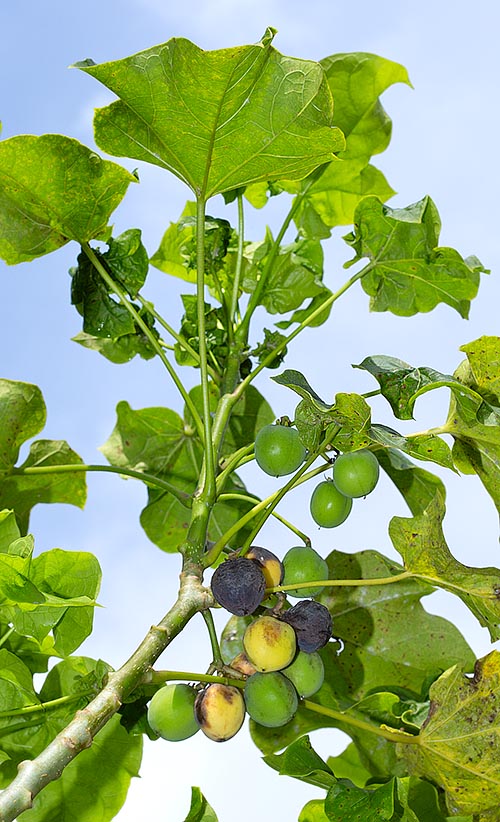
Mission Biofuels India Private Ltd
SeguirVisão geral
-
Data de fundação 3 de fevereiro de 1929
-
Setores Transporte / Logística
Descrição da Empresa
What is a Jatropha Curcas Tree: Jatropha Uses in The Landscape
When you acquire through links on our website, we might earn an affiliate commission. Here’s how it works.
Jatropha (Jatropha curcas) was when touted as the new wunderkind plant for biofuel. What is a Jatropha curcas tree? The tree or bush grows in any kind of soil at a rapid rate, is hazardous, and produces fuel suitable for diesel motor. Continue reading for more Jatropha tree info and see how you rate this plant.
What is a Jatropha Curcas Tree?
Jatropha is a seasonal shrub or tree. It is drought-resistant and easy to grow in tropical to semi-tropical places. The plant lives for approximately 50 years and may grow almost 20 feet (6 m.) high. It has a deep, thick that makes it versatile to poor, dry soil. The leaves are oval, lobed, and deciduous. Overall, the plant is not especially aesthetically attractive, but it does get attractive green cymes of flowerets which become a tri-compartment fruit with big black seeds. These large black seeds are the reason for all the hullaballoo, because they are high in burnable oil. A fascinating piece of Jatropha tree details is that it is listed as a weed in Brazil, Fiji, Honduras, India, Jamaica, Panama, Puerto Rico, and Salvador. This shows how versatile and sturdy the plant is even when introduced to a brand-new area. Jatropha curcas cultivation can produce oil that is a great substitute for existing biofuels. Its usefulness has actually been challenged, but it is true the plant can produce seeds with an oil material of 37%. Unfortunately, it is still a part of the food vs. fuel argument, as it requires land that might go into food production. Scientists are attempting to develop a “incredibly Jatropha” with larger seeds and, therefore, bigger oil yields.

Jatropha Curcas Cultivation

Jatropha usages are rather restricted. Most parts of the plant are harmful to consume due to the latex sap, however it is used as a medical. It works in dealing with snakebite, paralysis, dropsy, and apparently some cancers. The plant might have come from Central to South America, however it has been introduced around the globe and flourishes wild in places like India, Africa, and Asia. Chief among Jatropha uses is its possible as a clean burning fuel to replace nonrenewable fuel sources. Plantation growing in particular areas has actually been attempted, but total Jatropha curcas cultivation has been a disappointing failure. This is due to the fact that the production mass of oil can not equate to the land use by cropping Jatropha.
Jatropha Plant Care and Growth
The plant is simple to grow from cuttings or seed. Cuttings result in much faster maturity and quicker seed production. It prefers warm environments, however it can endure a light frost. The deep taproot makes it drought-tolerant, although the very best development will be attained with supplemental watering occasionally. It doesn’t have any major illness or bug issues in its natural regions. It may be pruned, however flowers and fruit form on terminal development, so it is best to wait until after flowering. No other Jatropha plant care is required. This plant works as a hedge or living fence, or just as a decorative stand-alone specimen.
Gardening pointers, videos, info and more delivered right to your inbox!
Register for the Gardening Know How newsletter today and receive a complimentary download of our DIY eBook “Bring Your Garden Indoors: 13 DIY Projects For Fall And Winter”.
Bonnie Grant is a professional landscaper with an Accreditation in Urban Gardening. She has been gardening and writing for 15 years. A previous expert chef, she has an enthusiasm for edible landscaping.
